The Prestige 420 is a sincere and good looking boat, without frills. A complete, well-built and nice finished 12-meter: it has everything you need from a flybridger.
When you approach a cruiser with sun bridge this size, the risk of “diving” into the sea of sameness is ‘round the corner. But this is definitely not the case with Prestige 420. The styiling from Camillo Garroni and the family feeling of the range are a good starting point, and this last model from the luxury division of Jeanneau is innovative and captivating without hindering practicality.
The deck of Prestige 420
The family feeling is all there: luckily, one would say. The Prestige 420 is the smallest of the family, but she recalls all the styling solutions already seen on the larger siblings 450 and 550. It could have been risky on this smaller scale, but we think the result is 100% flawless. The hull sides look lighter thanks to the big squared window, while the front portholes clustered in a black stripe give sleekness to the lines.
A slender bow line and a tapered superstructure, along with the full-length side windows in one color, perfectly define the profile of the boat, while the fore solarium, the cockpit and the swim platform fully respect the “dogmas” of tradition. Practicality first. Newer, but not innovative, is the position of the galley to the back of the salon, which combines to the fully sliding doors to create perfect continuity between inside and outside.
What impresses the most is probably the flybridge: beside a rather vertical staircase (couldn’t ask more on a 40-feeter), the sun deck boasts all the features of a larger boat. Dinette abaft, sun beds beside the helm station, and a center cabinet with grill, sink and refrigerator. What else could you get?
Interiors of Prestige 420
As mentioned the galley is located to aft of the main deck, which i good for letting the cooking fumes out but mainly to serve both the inside dinette and the cockpit. What is really peculiar of this boat, though, is the separate access to the two cabins. Despite the smaller size of the 420, Camillo Garroni has been able to fit the solution perfectly. The fore stairway leads to one room, while another one from the salon takes down to the other amidships. Both are spacious, with large en-suite and separate shower box. The one located in the middle has two separate beds which turn into a double with some simple movements.
On the main level, the helm station is on the starboard side, with the table and couches to port. Moving back, there’s the galley cabinet, narrow and long to leave the free passage to fore, and on the opposite side the refrigerator and the mentioned stairway to the center cabin. The dinette can be turned into a third, double berth in case you have extra guests visiting. The joinery and the trim feature light and harmonic shades, while the materials are noble and well crafted. Which is exactly what we expected on a Prestige.
The powertrain consists of two Volvo Penta IPS, with choice between IPS 400 and 500: this means a total of 600 or 740 HP. We tested the more powerful version, and considering the small price increase this is the one we recommend. If you really don’t mind of “fast” cruising and quick transfers, you can still opt for the IPS 400: lower fuel consumption, same reliability.
The test of Prestige 420
As we get out of Cannes port we notice the nose of our 420 getting a bit too high. So, a slight push on the throttle levers is necessary to regain a leveled balance. I try again giving power in a faster way and the problem doesn’t appear: the line of the horizon is well in front of me, through the windscreen. The navigation continues in comfort, although if I pilot seated and sharply veer to port, it gets tough to see where I’m headed at. This is pretty normal, and it’s a safe custom to lean and take a glance at the route. Absolute performance is not a priority on such boat, so getting to 30 knots (with trim tabs) is a pretty good result. As for the tabs, they don’t vary the balance that much, I believe they will be necessary just when centering the setup of a full laden boat. Minimum plane is at 2300 rpm and 13 knots, for a fuel consumption of 65 lph: almost half of the figure we read at 3000 revs and 23 knots (110 lph), indicated as the cruising pace. The IPS transmissions give advantages in terms of handling, not just when maneuvering in harbor but also when in navigation: turns can be tight which is good in emergency situations, although not needed during a normal cruise. Final test is the impact on some waves: I create a wake then turn to cross it, and the hull enters smoothly with no thuds.
Technical features
Length overall 12,64 mt (41ft 5in)
Length hull LH 11,32 mt (37ft 2in)
Beam 3,97 mt (13ft)
Dry displacement 9516 Kg
Full load displacement 13592 Kg
Draft 0,79 mt (31in)
Engines 2×300 – 2×370 HP
Fuel tank 1100 lt (290 US gal)
Fresh water tank 400 lt (105 US gal)
Cabins 2
Berths 6
Passengers 9-11
CE certification B-C
Performance
rpm knots mph lph nm/l dB range (20% reserve)
1000 5,9 6,8 6,7 0,88 62 775
1500 8,6 9,9 18 0,48 65 420
2000 10,2 11,7 45 0,23 70 199
2500 14,7 16,9 74 0,20 72 175
3000 23,5 27,0 110 0,21 74 188
3500 30,3 34,9 140 0,22 78 190
Test conditions
Moderate sea, temperature 22° C (72° F), clean hull, fuel 600 lt (158 US gal), water 380 lt (100 US gal), passengers 5
Indicative price
Volvo IPS 400 2×300 HPfrom € 330,600 + VAT
Volvo IPS 500 2×370 HPfrom € 356,800 + VAT
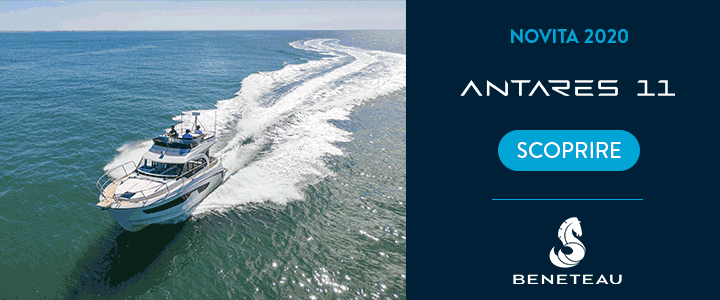

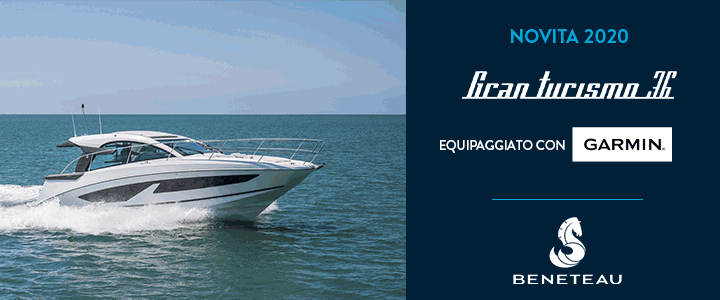
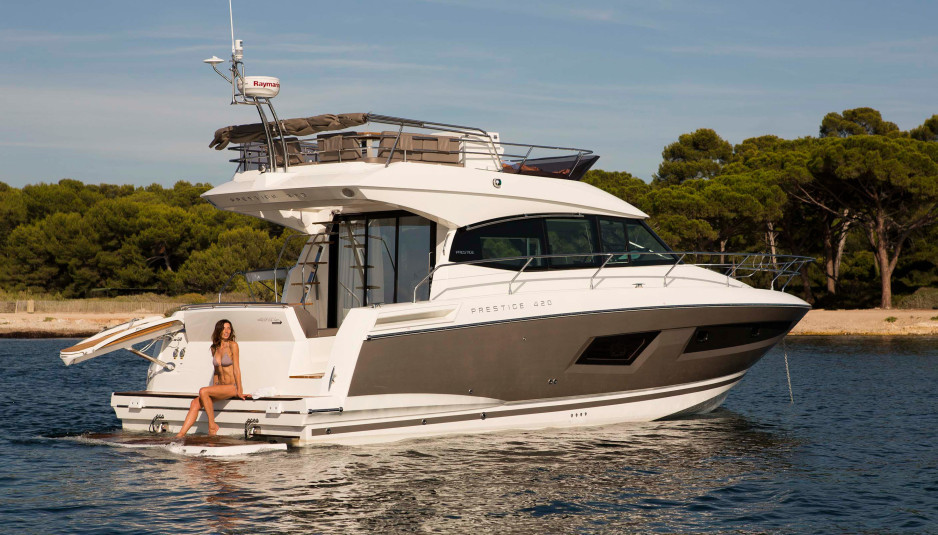
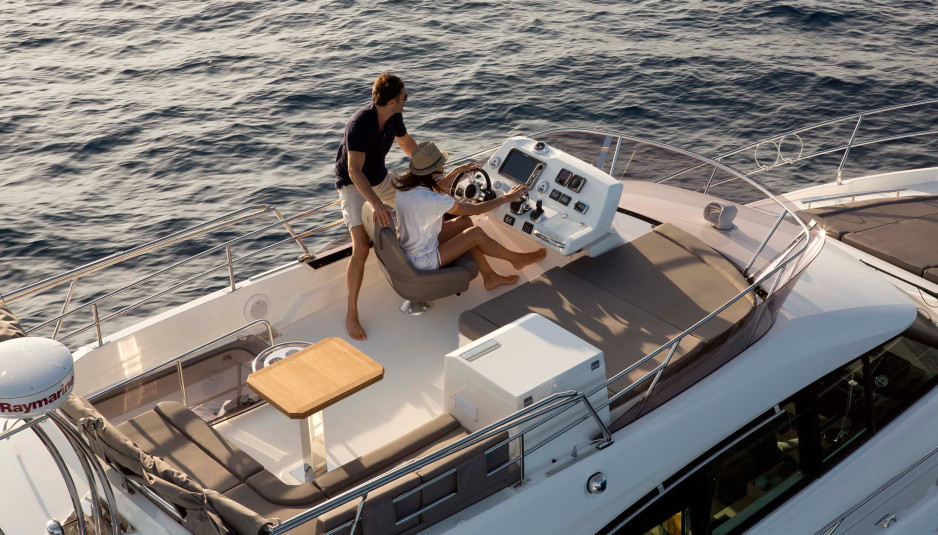

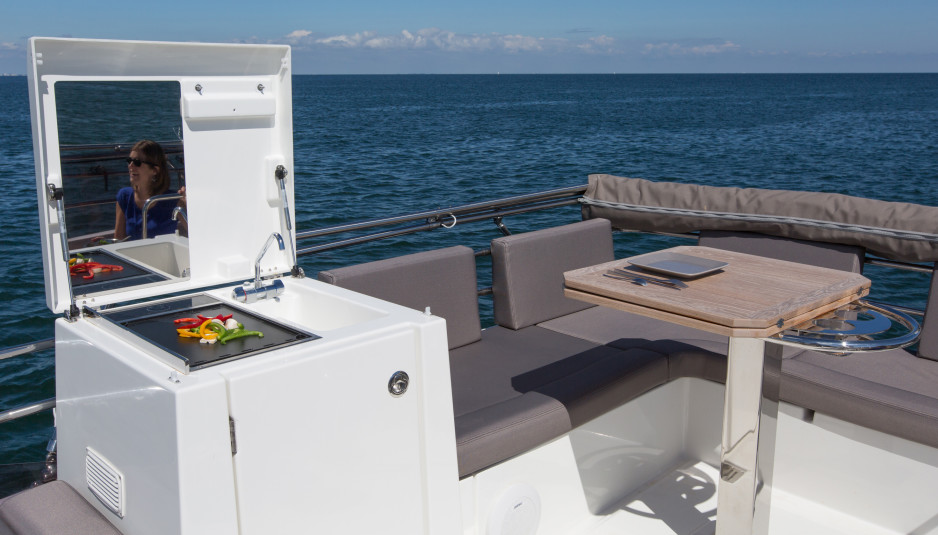
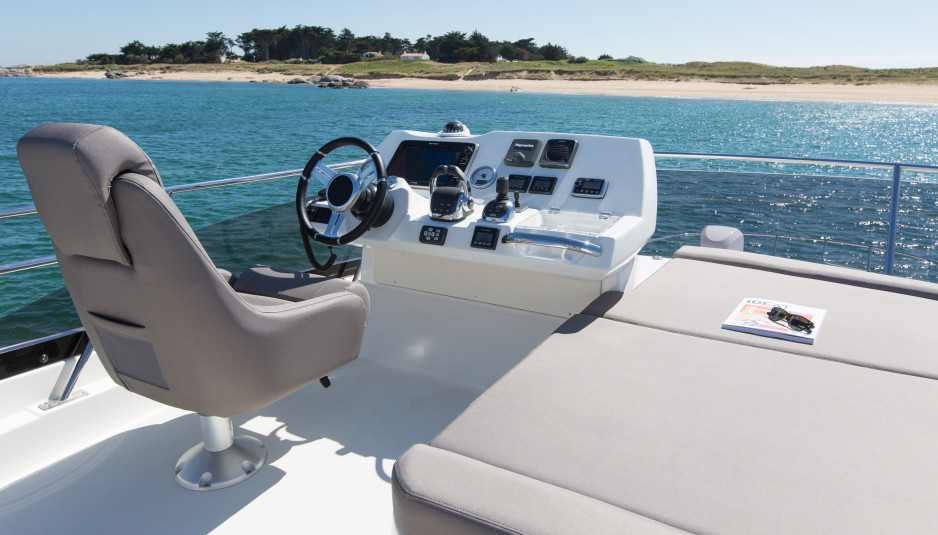
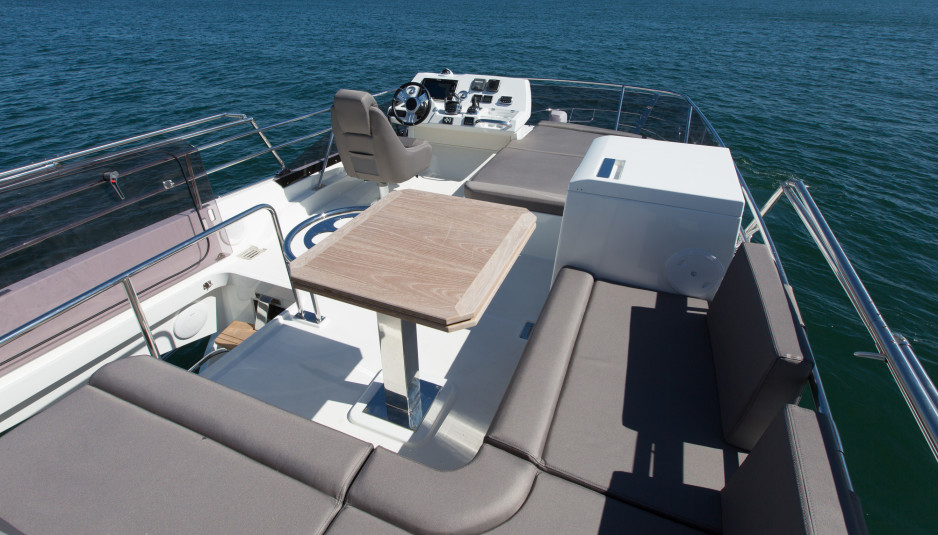
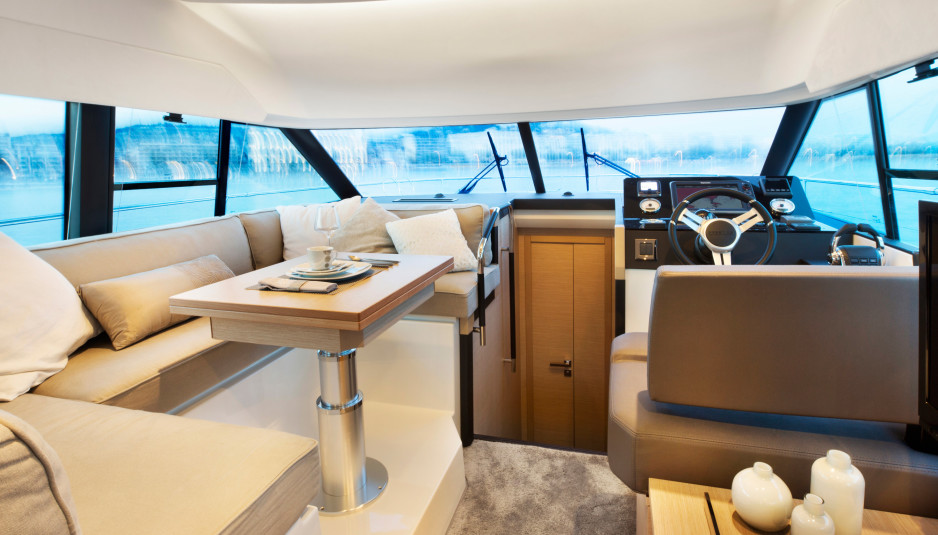
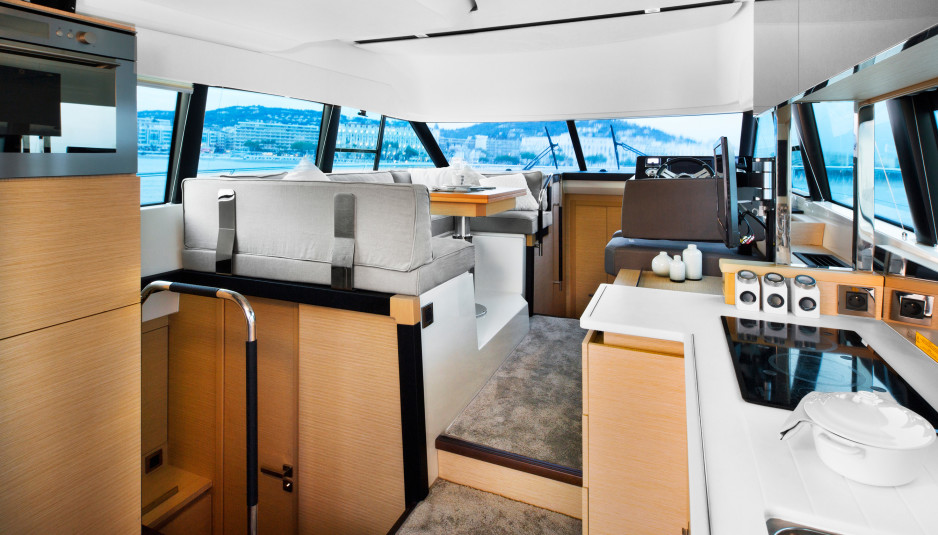
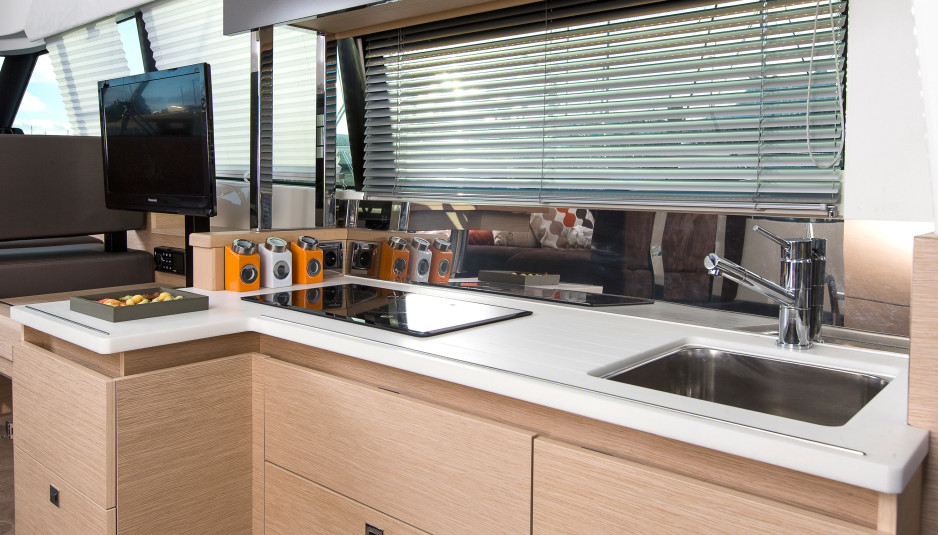
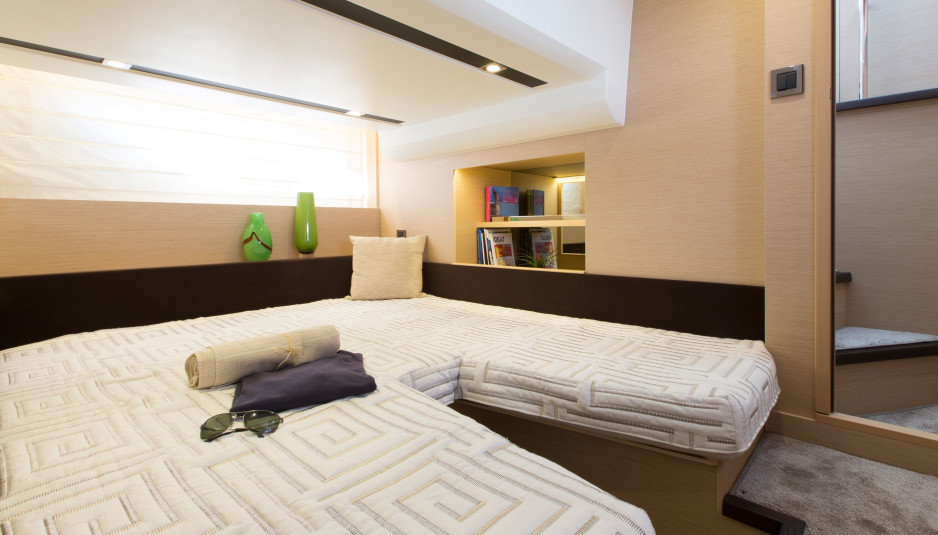
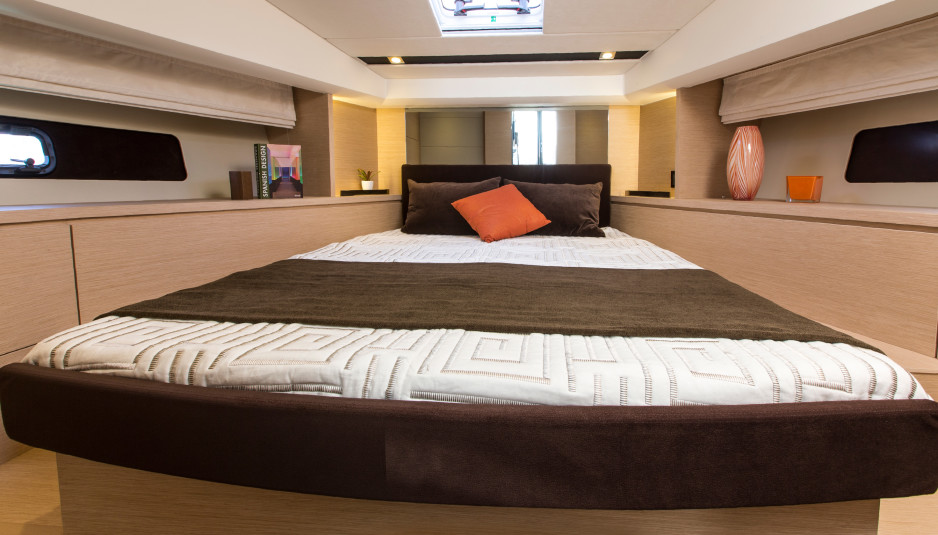
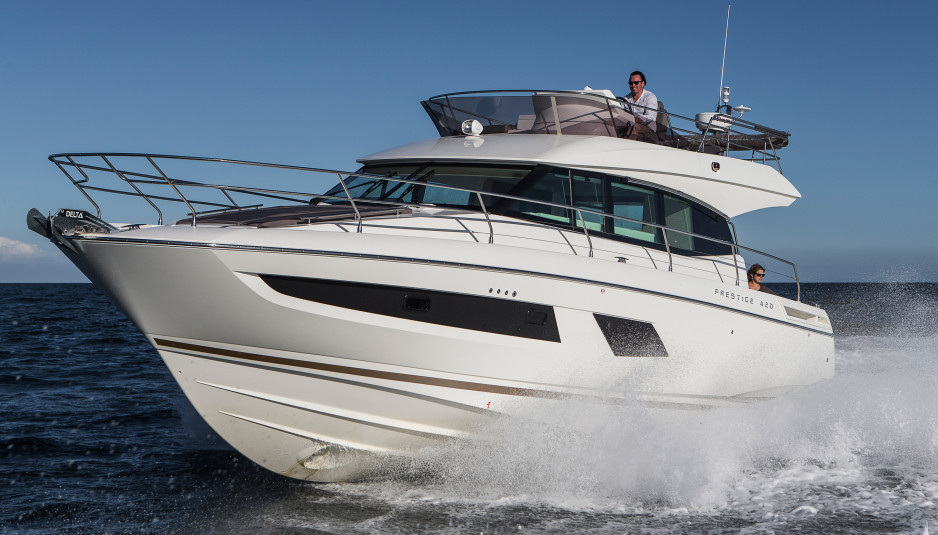



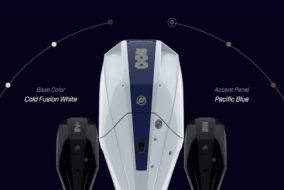
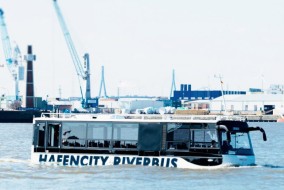
Follow Us
1251 Fans